Hindu Temples in Kajuraho
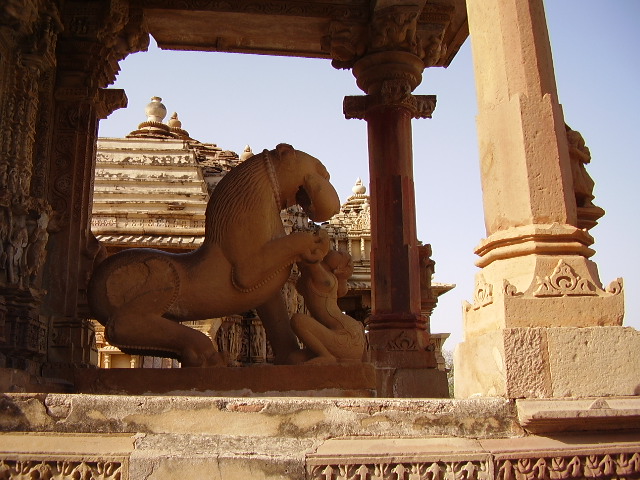
The temples in western area, Kajuraho
As soon as the burning begins to decrease, I start to visit the temples in the western part of the village, the most popular. Built between the 10th and 11th centuries, the temples of Kajuraho numbered more than 80 in an area of twenty square kilometers; the arrival of Islam in the north of the country in the XIV marks the destruction of numerous temples and the scarring of various statues. Only 25 temples survive, having arrived intact in our time thanks to the isolated position of the place and the jungle that had swallowed most of them.
Over the centuries, some yogis lived here secretly and every year the temples were visited by Hindus on pilgrimage; until 1830 the English explorer T.S. Burt, discovering the place in one of his travels, makes Kajuraho known to the world.
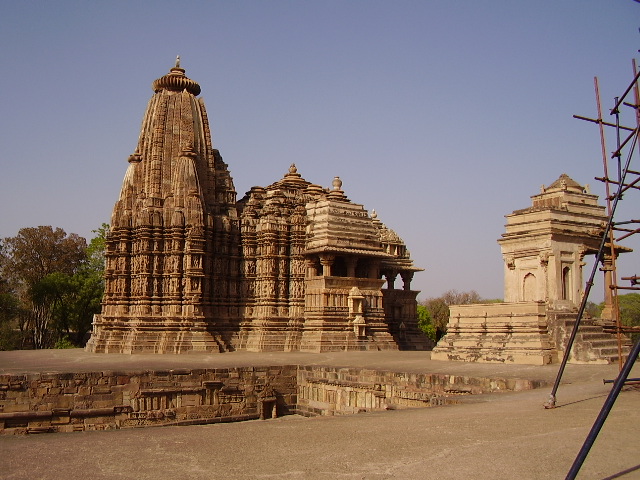
Only Kamasutra???
Most visitors are only interested in the statues representing various positions of the Kamasutra, statues and sculptures that have been the subject of discussions by historians and critics for decades. The Chandela dynasty built these temples to preserve the Hindu identity during the expansion of Islam in the north of the country; a message of truth and freedom. The beautiful apsaras, sculpted everywhere are the representation of life: mothers, lovers, gods, demons, musicians … Love in every form is part of life in every stage. Truth and beauty through which is possible to reach salvation. The dichotomy between sex and spirituality could not be best represented in the art of Kajuraho temples.
The beauty here is truly remarkable, the architectural forms are something unique in the world; circle and square are the building foundations, from which emerges the jagati (the platform on which the temple stands). The entrance is narrow; visitors should pass through the madapas, porches surmounted by a dome. The interior is instead covered by one or more sikhara, the diminishing domes richly decorated in Dilwara style.
Kandariya Mahadeva, Matangeshwara, Vishvanatha and Lakshmana Temples
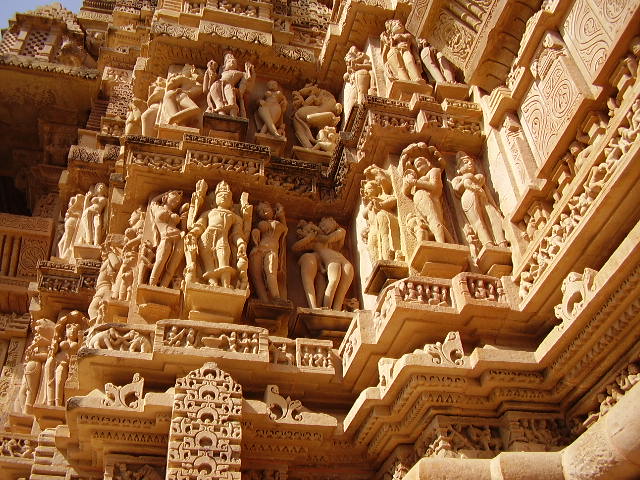
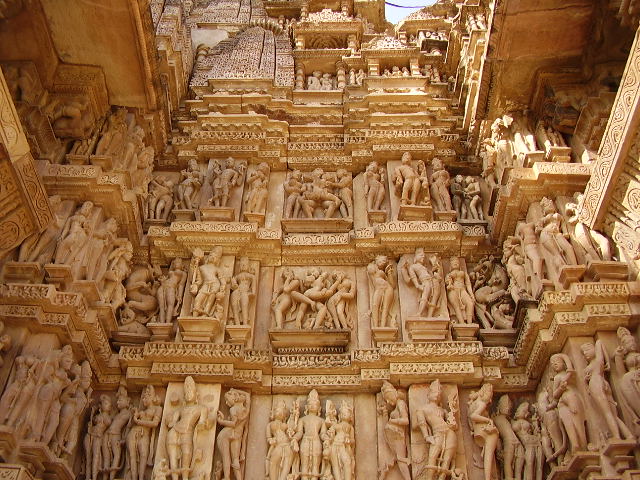
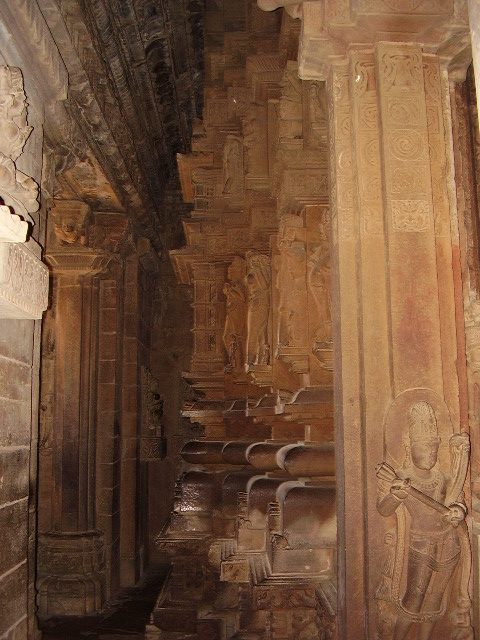
The three temples of the site, Kandariya Mahadeva, Matangeshwara and Vishvanatha, are dedicated to Shiva; inside therefore there is the classic linga (the phallus of the deity) presents in Hindu temples. The temple of Lakshmana is instead dedicated to the god Vishnu. The tall columns immersed in the penumbra contrast with the brightness of the exterior rendered built with sandstone. The blocks were assembled without using cement, but with a clever use of joints.
The Kandariya, 31 meters high, is the major temple. Its external walls are surrounded by three orders of panels literally covered by statues in each single recess. The scenes of the Kamasutra in communion with yoga position are alternated with apsara musicians, dancers or portrayed in everyday gestures such as breastfeeding and cosmetics. Statues of Shiva interchange with Visnhu and Rati; also appear scenes of war with elephants and soldiers in erotic positions.
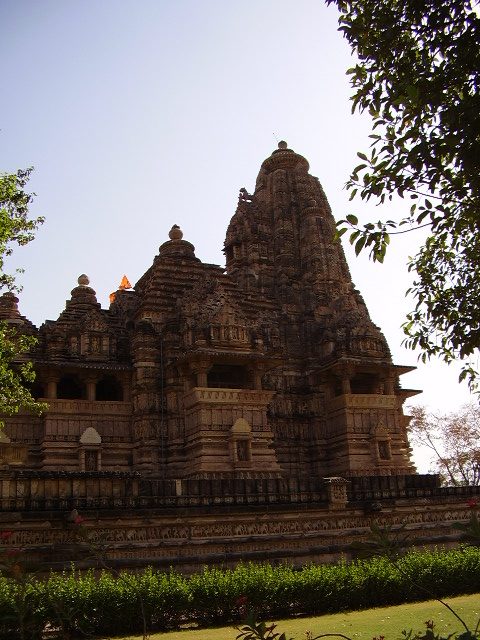
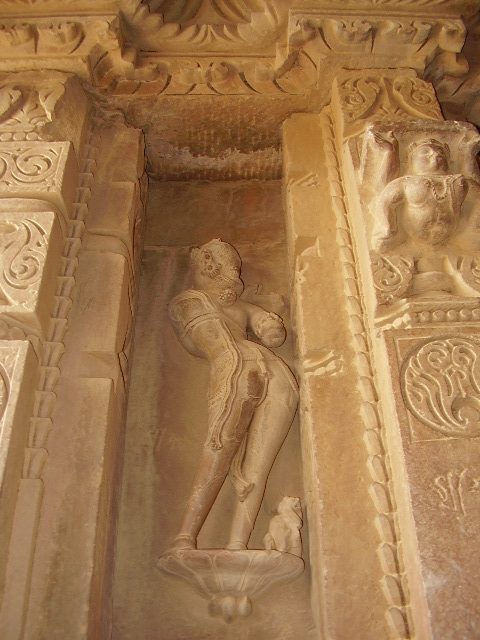
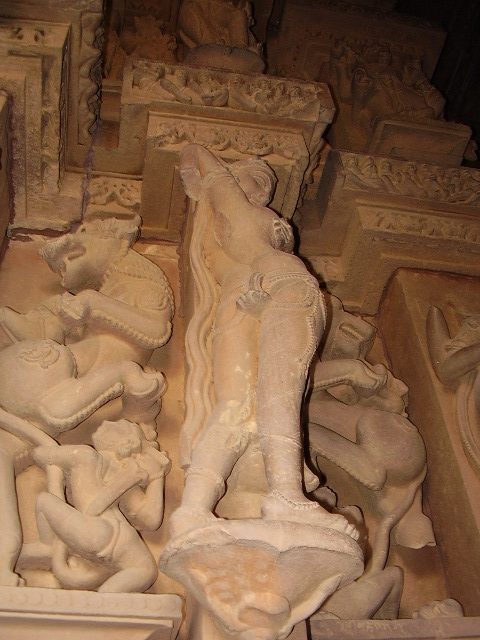
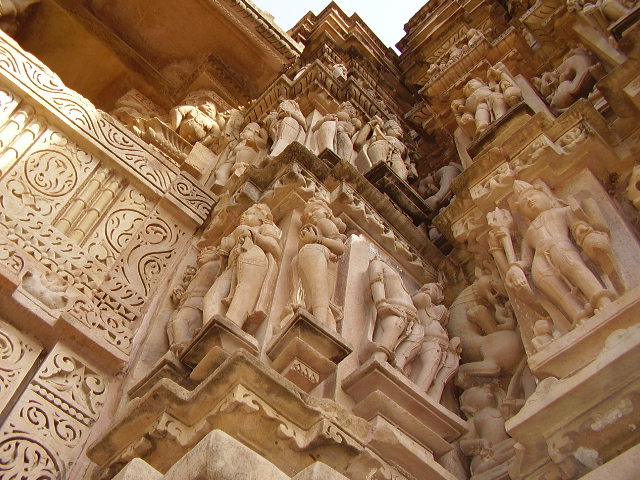
The minor Vishvanatha presents the same architectural styles with some peculiarities; the base is decorated with niches containing statues of the seven gods, a playful dancing Ganesh and the wife of Shiva, Parvati. On the sides of the temple continue the three orders of panels depicting erotic scenes. The beauty of the represented apsaras strikes me; one of them sculpted from the back while is playing the flute, another in the act of removing a thorn from the sole of the foot, still another that combs in a sensual way.
The Lakshamana Temple has smaller dimensions, but a higher jagati from which is possible to admire the panorama. The walls are decorated with balustrades with erotic sculptures, including sex with beasts. Among the sacred representations are the ten depictions of Vishnu, the goddess Lakshmi and Brahma. Inside Visnhu is depicted with four arms, a boar’s head, a lion’s head and a human one.
It only remains for me to enter the small and bare Matangeshwara, the only temple still in use. I climb the steep stairs and find in front of me a huge linga of two and a half meters. Impressed by the phallus that practically fills the whole room, I am called by the old half-naked priest. I approach and quickly the priest marks me with a scarlet bindi on my forehead. I thank him with a namaste and few rupees. Sated with splendor, I return to the hotel alone.
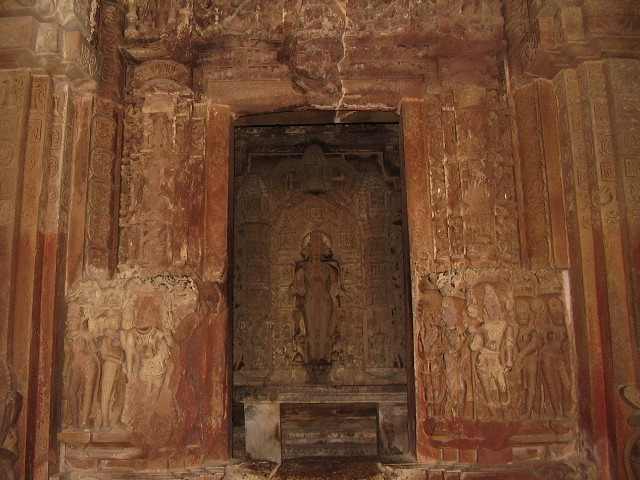
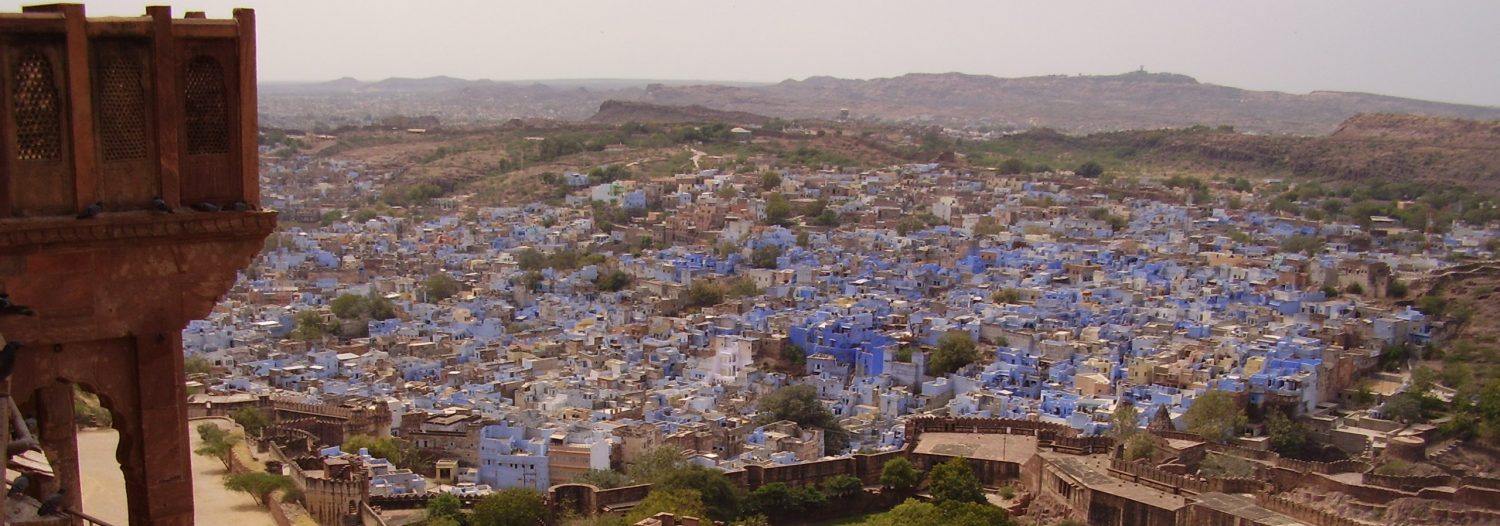
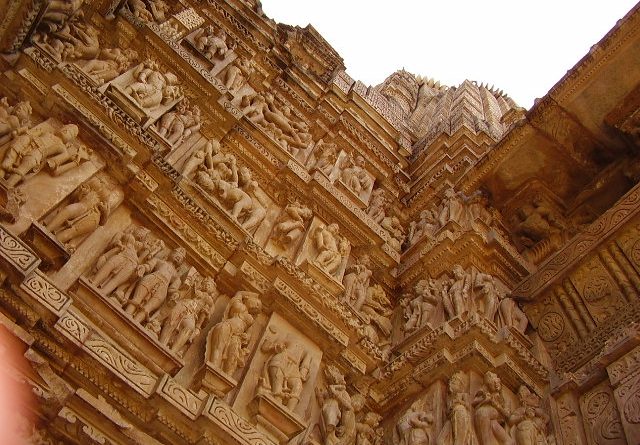
Pingback: Along the holy Ghat in Varanasi - Travels by Erica Leoni